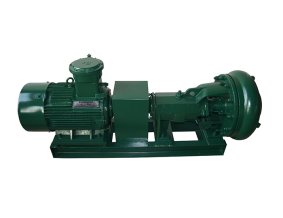Understanding Degasser Vacuum Systems An Essential Tool in Material Processing
In various industries, the quest for purity and precision in material processing is paramount. Among the numerous technologies employed to achieve these goals, degasser vacuum systems play a crucial role. These systems are designed to eliminate gaseous impurities from liquids, thereby enhancing the quality of a wide range of products, from coatings and inks to pharmaceuticals and food items. This article delves into the fundamentals of degasser vacuum systems, their operation, benefits, and applications.
What is a Degasser Vacuum System?
A degasser vacuum system operates on the principle of reducing the pressure surrounding a liquid to facilitate the removal of unwanted gases. When a liquid is placed in a vacuum chamber, the lower pressure allows gases that are dissolved or trapped within the liquid to escape more easily. This process is essential in fields where gas impurities can lead to defects, contamination, or variability in product quality.
Typically, a degasser consists of a vacuum chamber, a pump, and sometimes a heating element. The vacuum pump creates the low-pressure environment, while the heating element can sometimes be used to further reduce the viscosity of the liquid, aiding the removal of gases.
Why Use a Degasser Vacuum System?
The use of degasser vacuum systems offers several distinct advantages
1. Enhanced Product Quality By effectively removing dissolved gases, the system ensures that the final product is free from bubbles and voids, leading to improved performance and aesthetic quality.
2. Increased Shelf Life In the case of food and pharmaceutical products, the elimination of gases can prevent oxidation and spoilage, thereby extending shelf life.
3. Improved Process Efficiency By integrating degassing into the production workflow, manufacturers can reduce the need for additional processing steps, leading to greater efficiency and lower costs.
degasser vacuum
4. Consistency in Production With the elimination of gas-related defects, products can be produced with greater consistency, which is vital for maintaining quality standards.
5. Versatility Degasser vacuum systems can be utilized in various applications, making them a valuable addition to many production lines.
Applications of Degasser Vacuum Systems
The applications of degasser vacuum systems are vast and varied. Here are some notable examples
- Coatings and Inks In the paint and ink industry, gas bubbles can lead to imperfections in the finish. Degasser systems are routinely used to ensure that coatings are smooth and even.
- Pharmaceuticals In the production of medications, the presence of gases can not only affect product quality but can also compromise safety. Degassing is critical in maintaining the integrity of drug formulations.
- Food Production In the food industry, removing gases from liquids can prevent unwanted microbial growth and improve the quality of products like sauces, juices, and dairy items.
- Oil and Gas Degassing is essential in the oil industry to separate dissolved gases from crude oil before refining, thus enhancing the quality of the end products.
Conclusion
In conclusion, degasser vacuum systems are vital tools in ensuring the integrity and quality of a multitude of products across various industries. By effectively removing unwanted gases from liquids, these systems not only improve the aesthetic and functional qualities of products but also contribute to operational efficiency and safety. As industries continue to emphasize quality and consistency, the role of degasser vacuum technology will undoubtedly become even more central in modern manufacturing processes. Whether in pharmaceuticals, food production, or coatings, degasser vacuum systems are an indispensable asset in the pursuit of excellence in product quality.
 Linear Motion Shale Shaker In Drilling Rig
Linear Motion Shale Shaker In Drilling Rig  Oilfield Mud Cleaner
Oilfield Mud Cleaner  Drilling Fluid Decanter Centrifuge
Drilling Fluid Decanter Centrifuge  Drilling Mud Desander
Drilling Mud Desander  Hydrocyclone Desilter
Hydrocyclone Desilter  Centrifugal Pump/Centrifugal Mud Pump
Centrifugal Pump/Centrifugal Mud Pump  Shear Pump
Shear Pump  Jet Mud Mixer
Jet Mud Mixer  Horizontal Mud Agitator
Horizontal Mud Agitator  Constant Pressure Drilling Fluid Mud Gas Separator
Constant Pressure Drilling Fluid Mud Gas Separator  Mud Gun
Mud Gun  Mud Tank
Mud Tank  Solids Control System Vacuum Degasser
Solids Control System Vacuum Degasser  Flare Ignition Device
Flare Ignition Device  Diesel Tank
Diesel Tank  Submersible Slurry Pump
Submersible Slurry Pump 





































